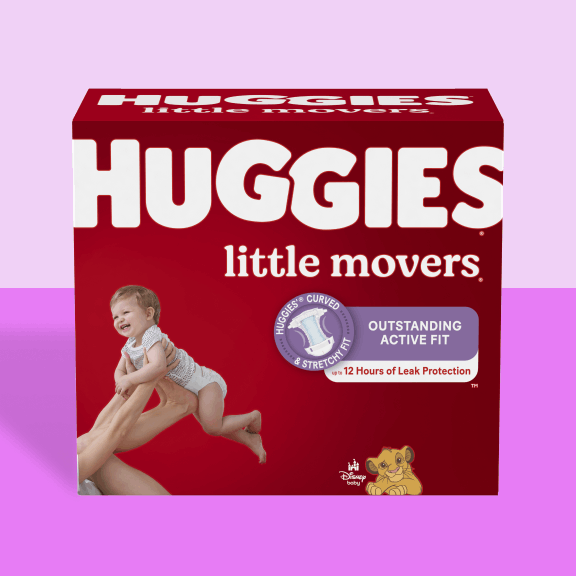Toddler Development
How To Get Through The Terrible Twos

Understanding the terrible twos means recognizing the signs, knowing how to help your child, and knowing how to help yourself so that the entire family can get through the phase.
Why is it called the terrible twos?
Around two years of age, your toddler will undergo some pretty serious developmental changes, including emotional and physical ones. They’re able to jump and climb now, as well as color and use their fine motor skills for other activities. But their verbal skills aren’t nearly as robust. They are also trying to assert their independence and test boundaries. They’re learning to communicate, which means a lot of big feelings, without the proper knowledge on how to express them. Enter the classic toddler tantrum, a clear sign the terrible twos have arrived. Frustration can be the defining emotion for both you and your child at this age.When do the terrible twos start?
The terrible twos don’t have to start the day your child turns two; sometimes it can be earlier or later, depending on how your child develops. (You might have heard of the phrase “threenager,” which means your child’s tantrums can be delayed until age three, or that they might just continue through age three.) Generally, it’s somewhere between 18 months and 2 and a half years.Signs you’ve entered the terrible twos
Tantrums—full-body meltdowns that involve crying, screaming and throwing themselves on the floor—are the obvious sign that the terrible twos have arrived, but there are a few other signs:- They have strong opinions about just about everything, from what color shoes they’re wearing to what they’re eating for breakfast, and get angry when you don’t do exactly as they were expecting.
- They get frustrated easily.
- Mood swings are swift and unpredictable.
- They hit or kick you or others frequently.
- They can bite.
- The word “no” becomes the most prevalent word in your house.
How to deal with the terrible twos
While it can seem like an eternity when your child is in the midst of a tantrum (especially if you are in public), the average tantrum only lasts about five minutes. In those five minutes, there are a few things you can do to help yourself and your child, such as:- Keeping a consistent schedule. Kids thrive on a routine. The less unpredictable their day is, the better. The more consistent their sleep is, the better.
- Offer them simple choices so that they feel in control. For example, you might ask if they want water in a blue cup or a green cup.
- Narrate what they should expect: Tantrums can come from unpredictability, so try narrating what they should expect, such as, “Once I’m done vacuuming the rug, we’ll go play.”
- Use timeout. Timeout doesn’t have to be presented as a severe punishment, but rather as a time for them (and you) to calm down. A popular tactic is to give a minute of timeout for every year old they are (in this case, two).
- Ignore bad behavior. Do your best not to lose control and yell, hit or spank.
- Keep snacks on you. Snacks can help children who are getting hungry and frustrated, as well as be a distraction if needed.
- Praise good behavior. Let them know when they’re behaving well.
- Encourage them to use their words. The more used to expressing themselves, with your guidance at first, the better they’ll get at it.
- Toddler-proof your house. If they can’t see it or get to it, they can’t want it, and they can’t have a tantrum when you have to take it away.
- Use play to mirror good behavior. By using dolls or other toys, you can help your child understand what is good behavior and what is bad behavior through examples.
- Use messy play to get out frustration. Messy play, such as sensory bins and Play-Dough can help a child have a place to direct their frustration to.
- Share their frustration. If your toddler is getting angry about having to take a nap, you can share in his or her frustration. For example, say something like, “I know you’re upset about having to take a nap. I am too! We were having such a nice time. But now is naptime.”
- Stay as calm as you can. Any parent of a toddler can tell you it’s incredibly difficult to stay calm, but you need to try. Staying calm will help your child mirror your behavior.
How to cope with the terrible twos as a parent
Taking care of yourself can help both you and your child, but it can be difficult as emotions are running high. There are a few things that you can do as the adult to help yourself during this transition phase. Remember, this is natural, and most children do go through this phase. You can:- Work on staying calm. Whether that’s meditation, breathing or some other method, try to pause before reacting to your child. If that means giving yourself a timeout before reacting, do so.
- Pick your battles. Consistency is key, but sometimes the juice is not worth the squeeze. Be consistent but be reasonable. What is worth putting a limit or boundary on? What’s not?
- Find an outlet. Whether that be a hobby or just taking a walk, find a way to give yourself a little space from the situation when you can.
Explore more parenting tips at Huggies.com.






